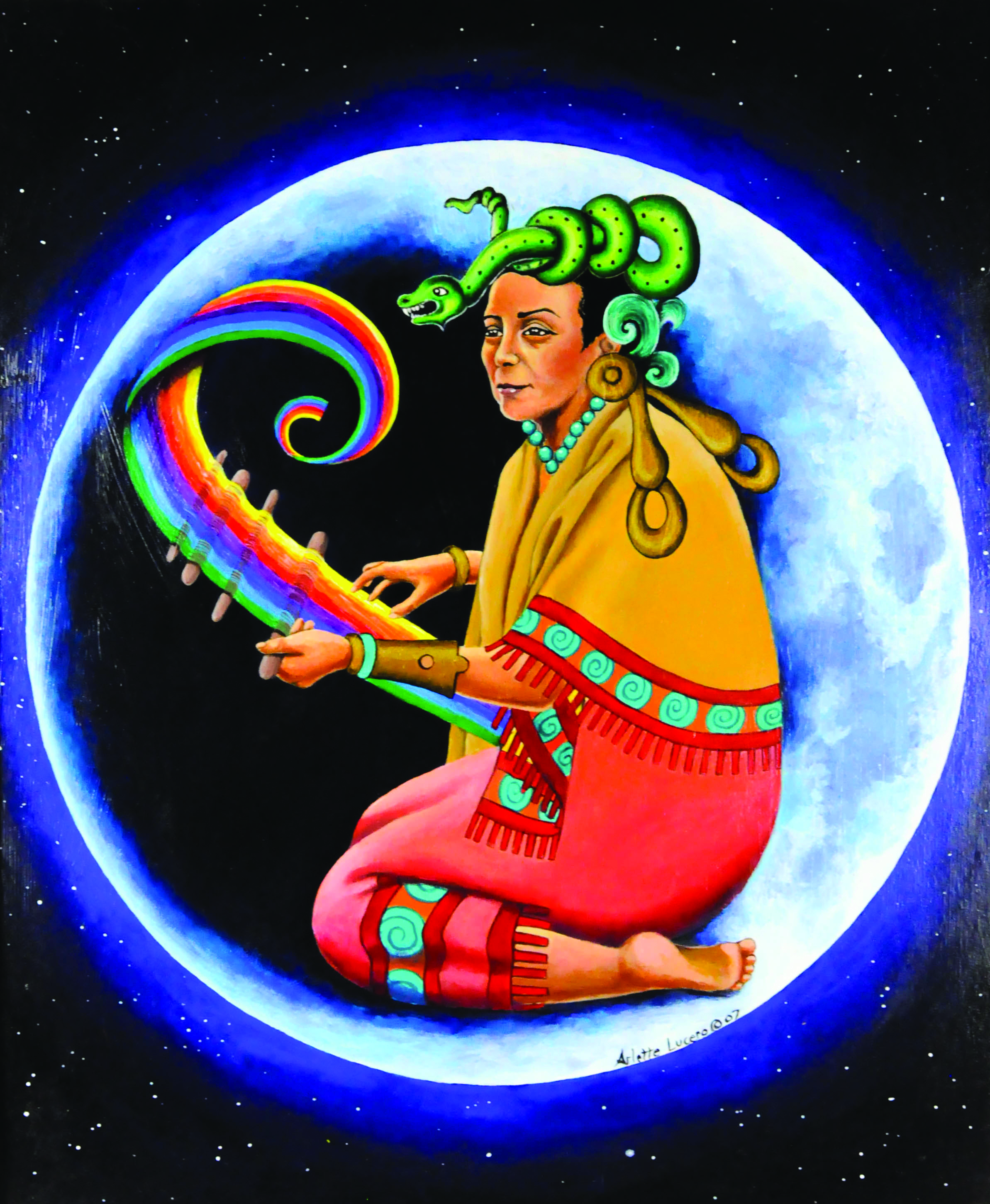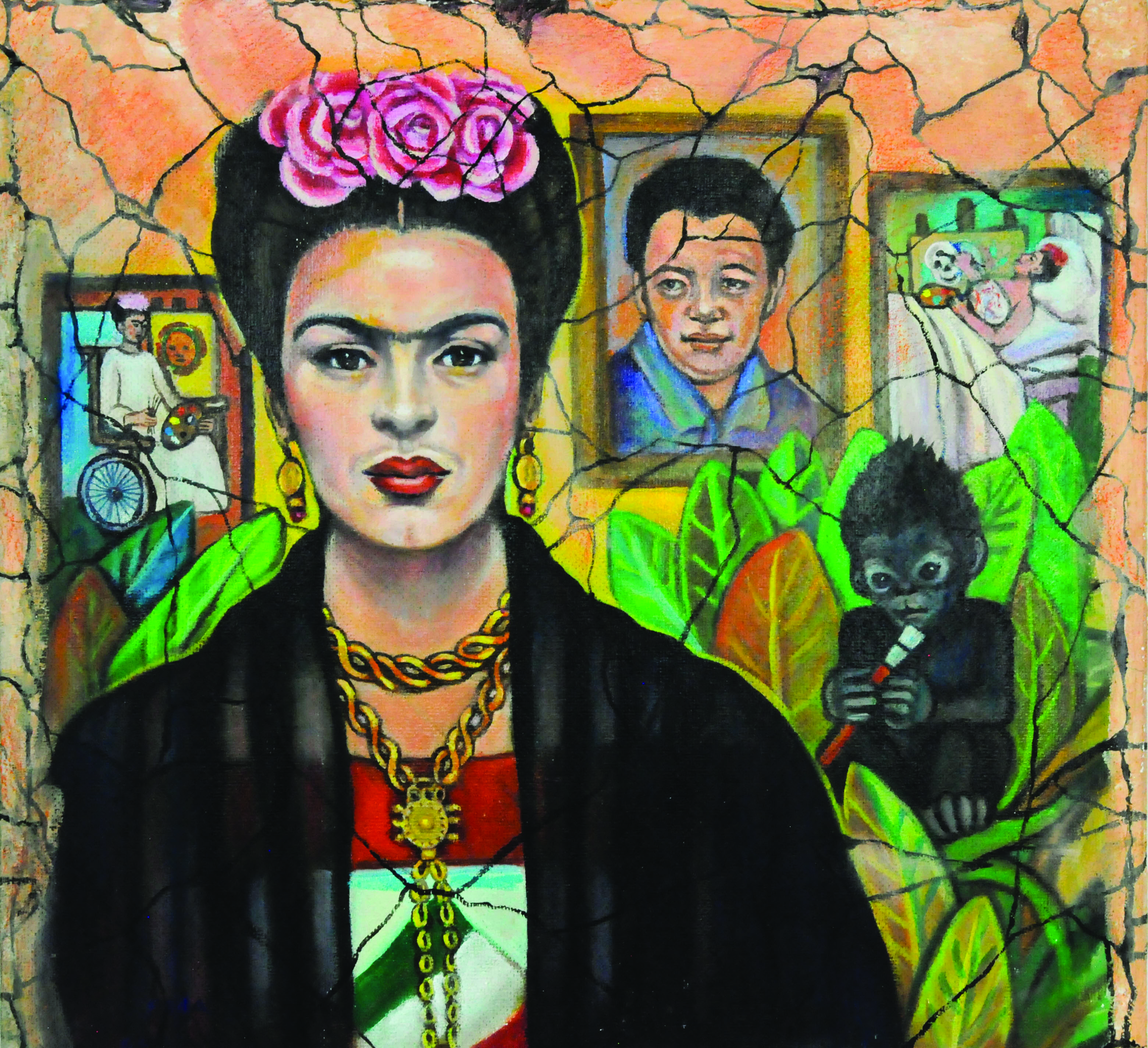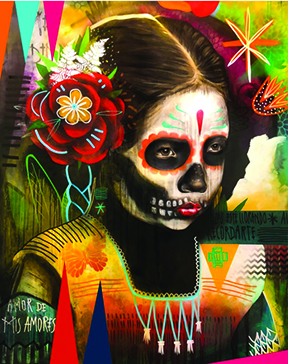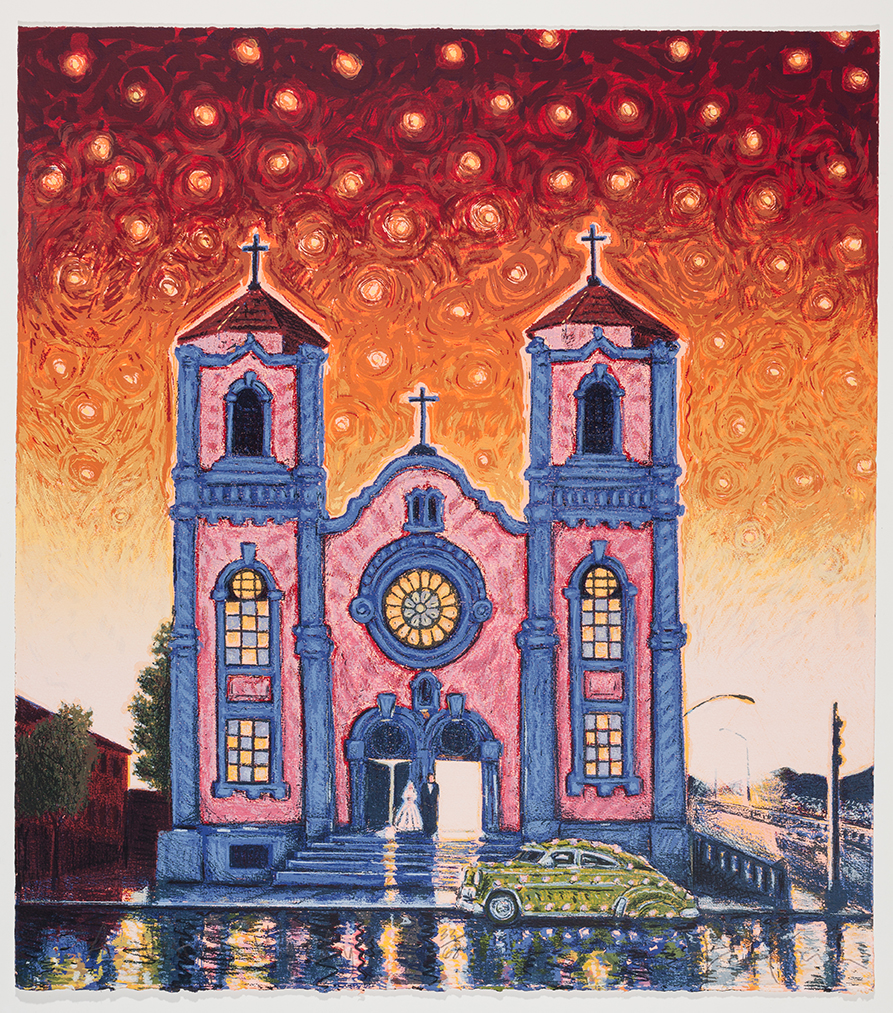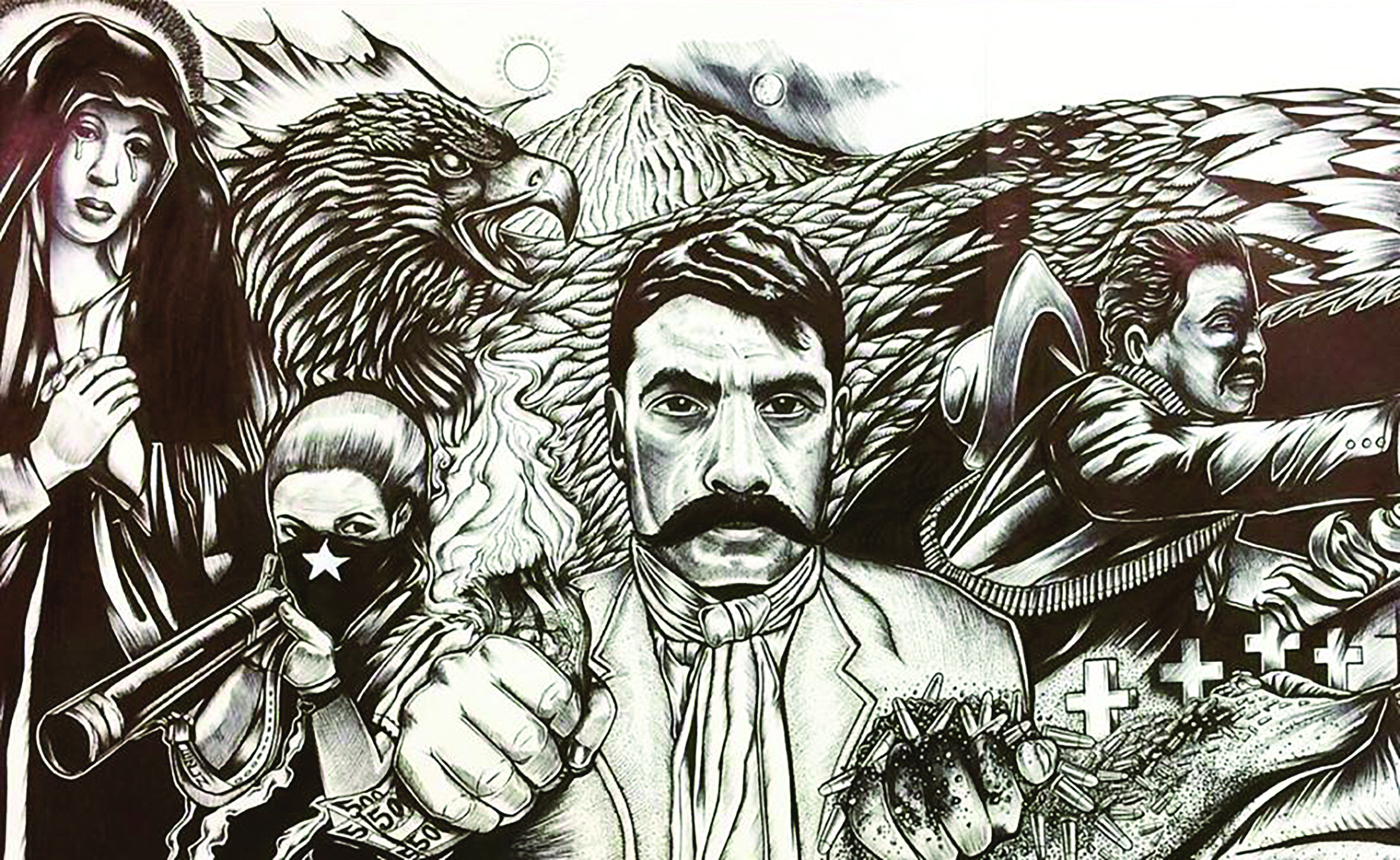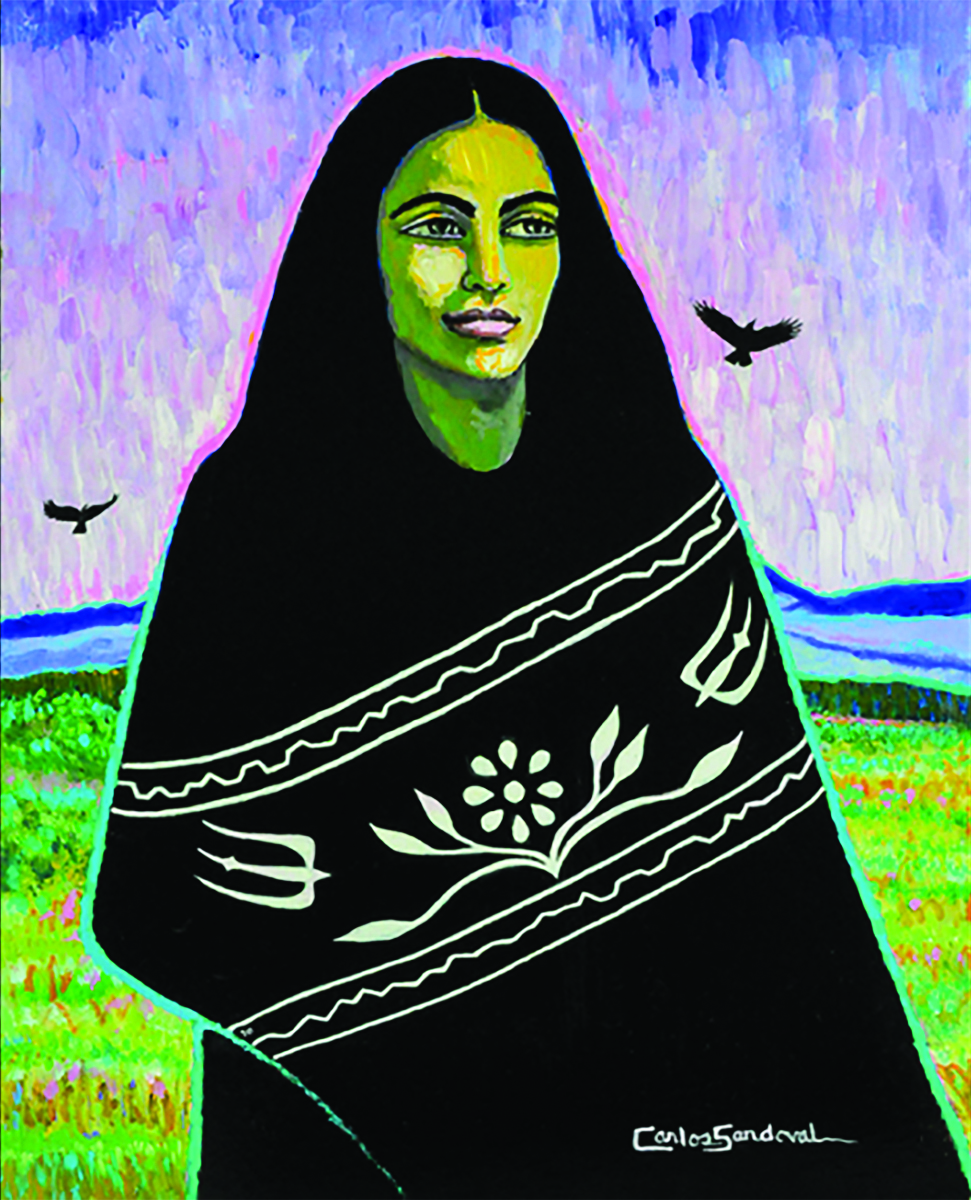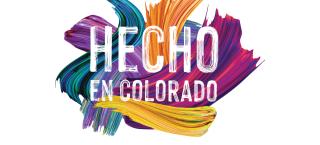
Story
Hecho en Colorado: Artists Shaping History and Culture
History Colorado Center, Through January 10, 2021
In partnership with the Latino Cultural Arts Center, the History Colorado Center is presenting Hecho en Colorado—or Made in Colorado—an exhibition of some sixty works that highlight the artistic and intellectual contributions of Native, Mexican, and Chicano artists to the state of Colorado.
At the core of the Latino Cultural Arts Center is The Abarca Family Collection, which began in 1970s Denver with Luis and Martha Abarca. As the family business, Ready Foods, grew in size and profitability so too did Luis and Martha’s passion for the arts. “My father would go to the artists’ studios on weekends to hang out and encourage them,” their daughter Adrianna Abarca says. “If he had a few extra bucks in his pocket he’d buy their art and hang it in the offices.” The founder of the Latino Cultural Arts Center, she now carries on her parents’ legacy.
“Even though my father was not Chicano,” she says, “he raised his kids in a town that had a heavy Chicano identity. Personally, I’ve been greatly inspired by the Chicano Civil Rights Movement and the foundation that my parents created with the art collection. In the end, it all comes back to how it first started: I’m following in my father’s footsteps in encouraging artists to develop their talent and guide us towards a more socially just world.”
From the collection’s modest beginnings, she says, “it expanded to include a broad array of Mexican and Mexican American folk and fine art, textiles, and literature, but it all began with the Chicano painters in Denver.” Now, a part of that interdisciplinary and intergenerational collection of today’s artists is at the heart of Hecho en Colorado, which is guest curated by Abarca and on view through January 10, 2021.
For the last twenty years, Adrianna Abarca has taken the lead in building the collection. “I collect mostly representational art: works that are identifiable, more familiar, more relatable as cultural components of Chicano/Mexican communities.” Hecho en Colorado features art forms that depict and draw from both urban and rural experiences and reflect both ancient and contemporary traditions. Up-and-coming artists are juxtaposed with prominent figures such as Carlota EspinoZa, Ramon Kelley, Carlos Fresquez, and David Ocelotl García.
Hecho en Colorado features wide-ranging works across artistic traditions and forms of expression that highlight the outsized artistic achievements of a dynamic and powerful community shaping history and culture in Colorado. It welcomes visitors in the History Colorado Center’s ground-floor Ballantine Gallery, directly adjacent to the giant atrium space of the museum’s Anschutz Hamilton Hall, with an array of color.
“Some of the art, including sculpture, textiles, and poetry, reflect well-known topics and figures in the community such as music and dance, low-rider culture, or other day-to-day celebrations,” says Abarca. For example, Carlos Fresquez’s dazzlingly colorful print of a wedding scene at St. Cajetan’s Catholic Church (today a part of the Auraria Campus) is featured. Fresquez also paints cars and car culture—an urban motif that appears in other works on view. Also represented is el Día de los Muertos, the Day of the Dead, a time of celebrating lost loved ones, with imagery that’s become iconic of Mexican American culture.
Of the artists, Abarca says, “some are self-taught, others formally educated. Some are more well-known than others.” Hecho en Colorado is a lively mix of traditional works with other works by artists her father never had the opportunity to meet. In a section of portraiture, images show the Indigenous roots of the state. “Some of the featured art goes back to pre-Columbian times while others are more contemporary.” Of the photography on display, she says, “It’s valuable in that it captures the richness and boldness of cultural expressions in the community that have been passed on for generations. Living in Colorado adds a distinct flavor to our experience because of the historic merging of cultures.”
As Abarca explains, “Parts of Colorado were previously Mexico and before that it was under the rule of Spain. That has an impact on how we see ourselves and how we express ourselves. We’re not independent of our surroundings; we’re very much a product of our geography. And it’s only recently that some of the major institutions are starting to recognize the contributions of our people. This exhibition is a product of the Chicano Civil Rights Movement, which is celebrating its fiftieth anniversary, because it inspired a lot of the artists to create and to preserve cultural traditions.” Abarca was on the committee that formed History Colorado’s exhibition El Movimiento: The Chicano Movement in Colorado, that’s housed on the museum’s second floor.
Among the other Denver artists in Hecho en Colorado, Abarca describes painter David Ocelotl García as a very important one. “He’s inspired and influenced by the Mexican master muralists; a lot of his art is for the people. His work has historic and cultural roots and brings a lot of joy. So I would call it ‘populist’ art for the masses, as opposed to elite art.” Also represented is muralist and visual artist Carlota EspinoZa, whose myriad commissions throughout Denver are well-known to many. The exhibition bridges the rural and urban divide by including artist Sofia Marquez, who is also an architect and rancher. Her drawing Vaqueros para Siempre features male and female vaqueros (cowboy and cowgirl), and ranching is a long tradition in her family, some of the original inhabitants of the San Luis Valley.
In all, Hecho en Colorado is just the beginning for the Latino Cultural Arts Center’s programming. The center is on the verge of something truly special in the history of Denver that will elevate the artistic and intellectual contributions of the Latino and Chicano communities to a national level. In January 2022, the center will open “Las Bodegas” (or warehouses), an integrated community arts center where artists, young people, families, and the public can seek learning opportunities that speak to their histories, interests, and passions. The LCAC encompasses four columns of learning: visual arts, performing arts, culinary arts, and music and spoken word. The center’s vision will live through every dance move, brushstroke, and music beat.
The History Colorado Center, and specifically the Ballantine Gallery, has become the leading space in Denver where such initiatives are given voice—and, more to the point, given their own voice. As an effort built around co-creation and co-authorship, the opening of the gallery last fall mirrors several ongoing initiatives at History Colorado. They include the Museum of Memory project, which lets communities reframe challenges and struggles into histories of resilience and pride; This Is What Democracy Looks Like, a series of upbeat provocations and challenges that inspire renewed participation in election-year democracy; the Women’s Vote Centennial Colorado, a grassroots effort to examine the power of voting through contemporary voices and topics; and the Year of La Chicana, a community partnership that connects the core issues of the Chicano Movement with issues of social justice, identity, and inclusion.
Hecho en Colorado includes Friday morning small-group Cafecitos that grant exclusive access to curator-led tours for groups who register in advance. For larger audiences, artists discuss their influences and experiences in virtual events sponsored by AARP.

